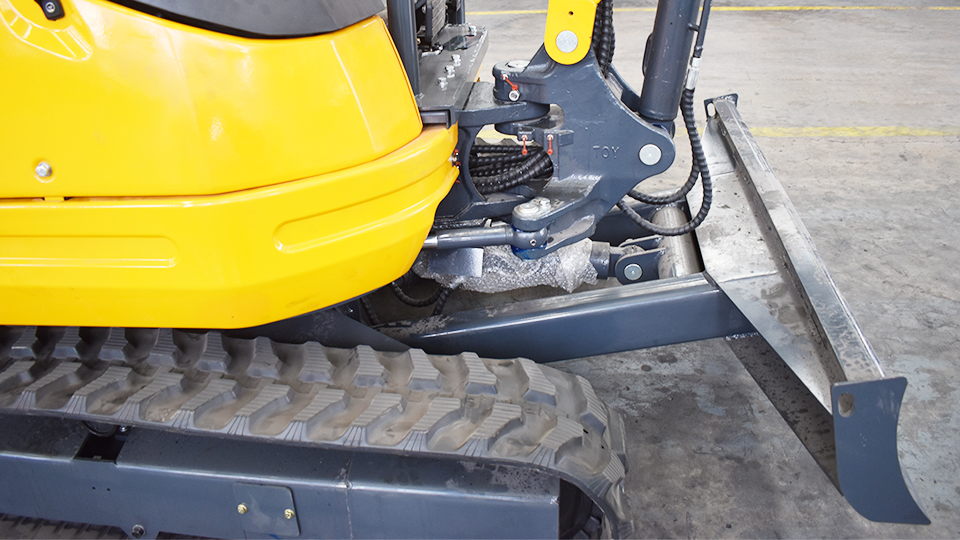Mini excavators, also known as compact excavators, are pivotal in modern construction and earthmoving. Designed for efficiency in confined spaces, these machines combine power, precision, and portability, making them indispensable across industries. This article delves into their components, applications, and evolving technologies.
1. Defining Mini Excavators
A mini excavator typically weighs between 1,000 kg to 6,000 kg (operating weight) and features a compact footprint. Unlike larger excavators, they prioritize agility over raw power, enabling operation in tight urban settings, residential areas, and rugged terrains.
Key Components:
Engine: Most use diesel engines (13–45 HP) for durability and fuel efficiency.
Hydraulic System: Powers booms, arms, and attachments via hydraulic pumps and cylinders.
Undercarriage: Includes tracks for stability on uneven surfaces.
Cab: Ergonomically designed for operator comfort, often with air conditioning and joystick controls.
Bucket/Attachments: Standard buckets, augers, breakers, or grapples for specialized tasks.
2. Types of excavating contractors
A. Compact Mini Excavators (1–1.5 Tons)
Ideal for light-duty tasks like digging trenches or planting trees. Examples include models under 2 metric tons.
B. Mid-Size Mini Excavators (1.5–3 Tons)
Balances versatility and power for demolition, grading, and pipe installation.
C. Ultra-Compact (Sub-1 Ton)
Used in gardens or confined spaces, such as pool installation or utility work.
3. Applications Across Industries
Construction: Digging foundations, footings, and utility lines.
Landscaping: Grading slopes, planting, and soil movement.
Urban Projects: Sewer repairs and road maintenance with minimal disruption.
Demolition: Breaking concrete with hydraulic breakers.
Agriculture: Digging ponds or maintaining farmland.
4. Technical Specifications
Digging Depth: Ranges from 1.5 m to 5 m, depending on size.
Lift Capacity: Varies from 1–4 tonnes, affecting material handling.
Travel Speed: 3–5 km/h for on-site mobility.
Fuel Efficiency: Modern models consume ~3–5 liters per hour.

5. Maintenance Best Practices
Hydraulic Fluid Checks: Regularly inspect for leaks or contamination.
Track Tension: Adjust to prevent wear and ensure smooth movement.
Filter Replacements: Clean air, fuel, and hydraulic filters monthly.
Engine Care: Follow oil change intervals based on usage.
6. Technological Advancements
GPS Guidance: Enhances precision in grading and excavation.
Automation: Autonomous models for repetitive tasks like trenching.
Hybrid Engines: Reduce emissions and fuel costs.
Remote Operation: Enables hazardous environment use via joysticks or VR.
7. Environmental Considerations
Low-Emission Engines: Meet Tier 4 Final standards for reduced pollutants.
Noise Reduction: Sound-dampening cabs and hydraulic systems (<70 dB).
Electric Models: Emerging zero-emission options for indoor use.
8. Future Trends
AI Integration: Predictive maintenance and real-time data analytics.
Lightweight Materials: Aluminum alloys to enhance portability.
Battery-Powered Units: Fully electric models for sustainability.
9. Choosing the Right Mini Excavator
Factors include project size, terrain type, and attachment needs. Renting may be cost-effective for short-term tasks, while purchasing suits long-term heavy use.
10. Safety Tips
Wear PPE (helmets, gloves).
Inspect machine stability on slopes.
Avoid overloading attachments.

Conclusion
Mini excavators revolutionize construction with their adaptability and efficiency. As technology advances, they’ll become even smarter, greener, and more integral to modern infrastructure projects. Whether for urban development or remote jobsites, these compact powerhouses deliver unmatched versatility.
Post time:Sep-25-2020
